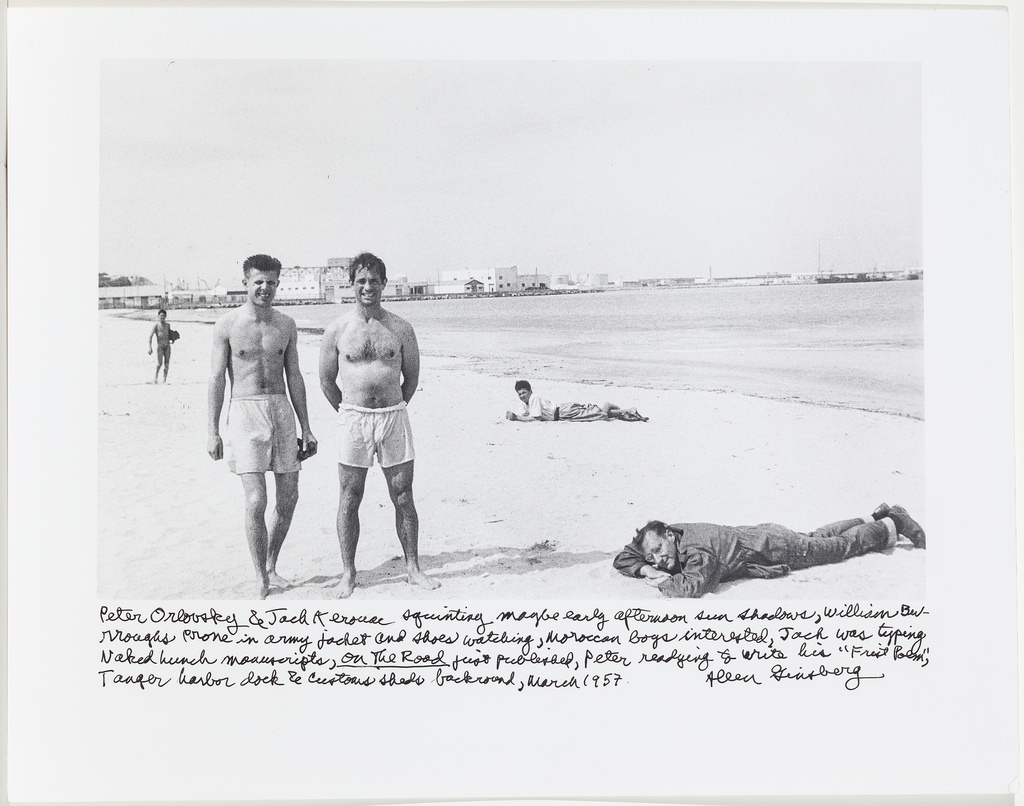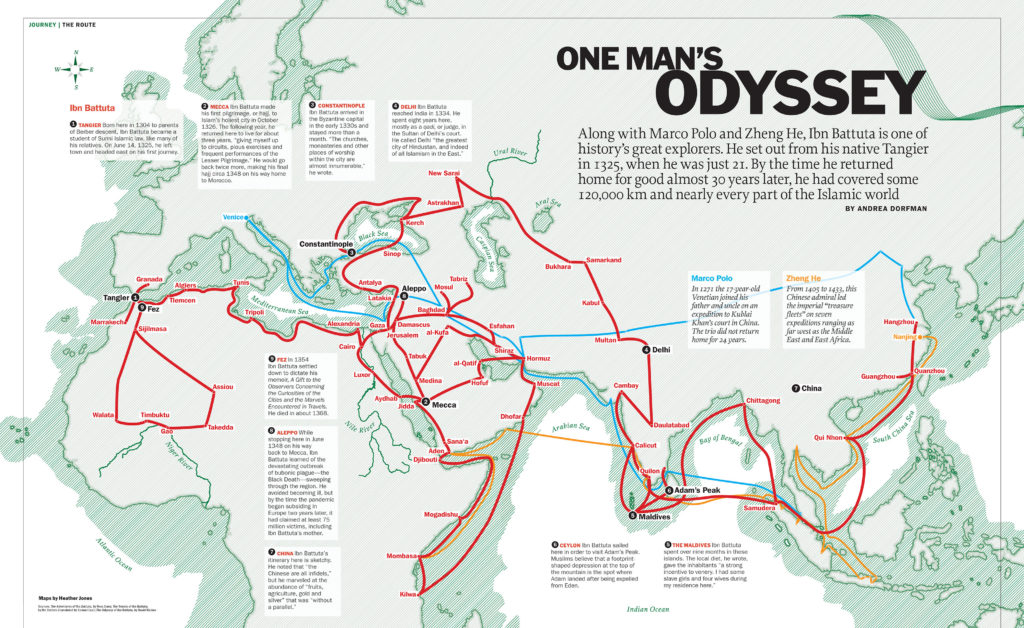As I write this, I'm waiting for our students to return from their weXplore, a five-day excursion that takes students beyond their host city for immersive cultural experiences. For the past two months, we as a school have called Maun, Botswana, our home. It's a small town on the edge of the Okavango Delta and, for many travelers, a doorway into Africa. But Maun is only one perspective, and it...
Read MoreAfter exploring Peru’s Sacred Valley of the Incas during our first term, THINK Global School is ready to start anew in the city of Rabat, Morocco’s capital. Before our students meander through the narrow streets of Fez or immerse themselves in the lively markets of Marrakech, we wanted to share seven interesting facts about Morocco with you. So whether you’re working on a school project or just looking to learn a little bit about this amazing country, we hope you enjoy these fun facts as much as we do.
#1. America’s most revered beat writers fell in love with Tangier

Orlovsky, Kerouac, and Burroughs (right) on a Tangier beach.
During the 1950’s and 60’s, Morocco served as a literary hub for many writers including, but not limited to, William S. Burroughs, Allen Ginsberg, Paul Bowles, and Jack Kerouac. If you are familiar with the Beat Movement, author Allen Ginsberg mentions Burroughs’ time in the city of Tangier within his poem America. Ginsberg writes, “Burroughs is in Tangiers I don’t think he’ll come back it’s sinister.”
Ginsberg’s brief mention of the port city on the Strait of Gibraltar pays homage to Tangier itself and also to his dear friend, William Burroughs, who spent several years at the Hotel El Muniria finishing his most famous novel, Naked Lunch. As for why Burroughs was in Tangier in the first place? It likely had to do with accidentally killing his young wife, Joan Vollmer, in Mexico City during a drunken game of William Tell. It wasn’t long after when a devastated Burroughs beat a hasty retreat to Morocco.
#2: Moroccans are the original travel writers
Did I mention Morocco is renowned for its own nomadic writers as well? Although many foreign writers have traveled to Morocco for literary inspiration, it was medieval Moroccan traveler and Islamic scholar Ibn Battuta who ultimately started the trend of venturing outside one’s borders. According to an article written by the Muslim Heritage editorial team, Battuta, originally born in Tangier, traveled nearly 73,000 miles over 30 years recounting his story in A Gift to Those Who Contemplate the Wonders of Cities and the Marvels of Travelling, more commonly known as the Rihla (The Travels). When Battuta finally returned to Morocco in the early 1350s he was commissioned by the Abu Inan Faris to produce an account of his travels (Rhila), but ultimately dictated his story to the poet Ibn Juzayy al-Kalbi before his death in 1368.
#3. Parlez-vous Arabic, Spanish, French, and English? You’ll hear them all here
Do you speak any of the languages listed above? There’s a good chance you’ll have no trouble communicating in Morocco, then. Morocco’s two official languages are Modern Standard Arabic and Amazigh (Berber), and although French is widely spoken here, it is largely considered a language of prestige. Most Moroccans speak a dialect of Arabic known as Darija, which is also common throughout Algeria, Tunisia, and Libya. Within the northern areas of Morocco and the Moroccan Sahara, however, Spanish is still commonly used in public discourse and television. And if that weren’t enough, English has maintained a presence within this multilingual country since 2002, when Morocco’s educational reform declared that English would be taught in all public schools from the fourth grade on.
#4. Speaking of language, the Moroccans have a wicked sense of humor
In Moroccan culture, it is not uncommon for everyday colloqualisms to be changed into something more humorous or to have said colloqualisms be widely used as cultural metaphors. For example, one of the words Moroccans frequently use for “money” is wusakh d-dunya, or “dirt of the world”, even though the formal word for their currency is dirham or flous. Moroccans also jokingly call their tap water Sidi Robinet (Sir, or Lord, Tap), as it is drinkable in most parts of the country. Although these a just a few examples of how jokes or everyday phrases used in Morocco can provide insight into cultural dynamics, there are also a number of resources that discuss how humor and the formal telling of jokes shape perceptions within different regions of Morocco. An interesting project that explores these hidden aspects of oral language can be found in Humor and Moroccan Culture by Matthew Helmke.
#5. The Kasbah of the Udayas is an incredible city within a city
Rabat may be Morocco’s capital, but the history of the city lies behind the enormous Almohad gate of Bab Oudaia, built in 1195. Kasbah des Udayas, a fortress set upon the mouth of the Bou Regreg river, is one of Morocco’s most unique and historically interesting sites. Originally built in the 12th century, this “city within a city” has been home to Arab tribes, Andalusian immigrants, powerful sultans, and, not to mention, the Mosque el-Atiqa, Rabat’s oldest mosque. Although Kasbah des Udayas is now primarily residential, travelers still venture down its narrow streets to view its whitewashed houses, pick-up some traditional Berber whiskey, or immerse themselves in the Andalusian Gardens.
#6. I’ll have a Berber Whiskey, hold the whiskey.
Moroccan Berber whiskey is actually an oblique title for mint tea, the national drink of Morocco. Unlike any tea you’ve tried before, Berber Whiskey combines gunpowder green tea, local mint tea, and copious amounts of sugar to create a satisfyingly sweet beverage between meals. According to an article written by David S. Bloom, the production of mint tea is actually more involved than one would expect. Bloom states, “Some never bring the liquid to a full boil. Some discard an initial pour over the tea—the “tea rinse”—to remove bitterness. Others keep the first rinse, calling it “the tea’s spirit,” that preserves the “soul” of the tea. Recipes are varied by household and often closely guarded as secret.” Although Berber Whiskey is the best kept secret in Morocco, we encourage you to try all the “whiskey” recipes this country has to offer.
#7. Moroccans love couscous so much, come Friday, it’s the only thing on the menu at many restaurants
Similar to Berber Whiskey, couscous is also a national Moroccan dish. Moroccan couscous, known locally as seksou, is not like the couscous you may have seen packaged in your local supermarket. From steaming the vegetables to sitting down with close family and friends, seksou takes several hours of preparation. And regardless of whether you’re in a village, town, or city, you’ll always find Moroccans gathered together over a bowl of couscous come Friday. In fact, this meal-day pairing is so prominent here that many restaurants don’t serve anything else on Fridays. So the next time you’re writing in Tangier or enjoying a romantic evening in Marrakech, add a feast of seksou, fresh fruit, and Berber whiskey into the mix.
Would you like to explore countries like Morocco?
THINK Global School is the world’s first traveling school, and each year our students live and learn in four different countries. If you’d like to gain a high school education by traveling the world, visit our travels page to see where we are headed, and then head to our admissions page to apply. We look forward to seeing you this fall!
